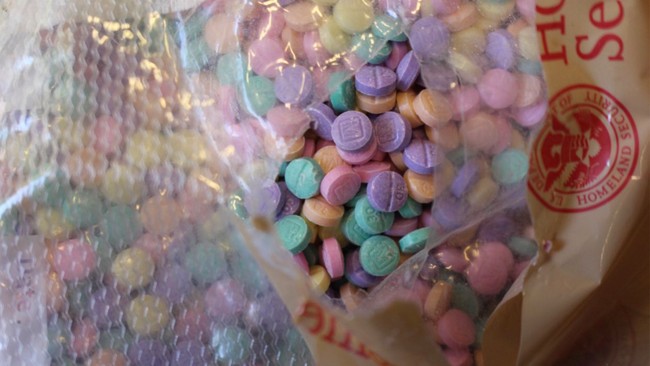
Fentanyl killed around 75,000 Americans last year and roughly the same number the year before. Most of it comes across the border from Mexico where the cartels have found it a much easier product to ship than other drugs, in part because it’s so much more potent and requires less space, time and material to produce.
Sunday the NY Times published a story in which three reporters were allowed into a fentanyl lab and even allowed to take some photos. On the one hand, the story suggests that the incoming Trump administration is already having some impact on the cartels.
After President-elect Donald J. Trump threatened tariffs if the country didn’t stop drugs from crossing the border, Mexico’s security forces announced their largest seizure of fentanyl ever this month: 20 million doses of the drug.
Criminal groups have had to adjust to the new conditions on the ground. Fearing law enforcement raids or attacks by their rivals, they say they’re moving their labs around more often than usual and producing drugs in new locations.
The cartels are scurrying a bit, which seems good. On the other hand, when the reporters finally get into a “lab” it’s just a home that had been set up that day.
The lab was hidden in a house right in the city center in Culiacán, on a bustling street full of pedestrians, cars and food stands. There were no smells or fumes outside that would have alerted a passer-by to the large quantities of fentanyl being cooked behind the door…
“They busted in on us this morning,” the boss said. Earlier that day, he explained, the Mexican military had raided one of his crew’s labs, which forced them to bring their material to this makeshift site.
A few guys working in a non-descript house on a regular street were cooking about a pound of raw fentanyl, about enough to make 200,000 doses. That really puts the claim of a 20 million dose seizure in perspective. All these guys need is chemicals, hazmat suits and a regular kitchen to create 1% of that amount in a fairly short amount of time.
You get the impression that this isn’t something that can be stamped out, not if every single house in Mexico is a potential fentanyl lab and not when the rewards for doing this are so high. The main cook in this story is a multi-millionaire.
He said he bought himself sports cars, houses and ranches. His crew acquired a helicopter and a small plane, he said. He blamed Americans for the overdose epidemic, saying that users were the ones deciding to take such a lethal drug. He snorted in disbelief when asked whether pressure from the United States or his own Mexican government would put an end to the fentanyl industrial complex.
“This is what makes us rich,” he said. “Drug trafficking is the main economy here.”
How many cooks and kitchens like this are out there? The answer seems to be as many as needed. Raid one house and they’ll move on to another. Arrest or kill one cook and someone else will happily take his place for the amount of money being offered. You can’t read the story and not come away feeling the effort to stop this is a bit hopeless.
But there’s an interesting coda to this story. The new President of Mexico, Claudia Sheinbaum, commented on the story during a press conference and claimed the NY Times’ reporters got it wrong.
“We talked about it in the security cabinet [meeting] today,” Sheinbaum said of the report headlined “‘This is What Makes Us Rich’: Inside a Sinaloa Cartel Fentanyl Lab.”
The president subsequently asserted that the photographs accompanying The New York Times report don’t in fact show the production of fentanyl. She claimed that the photos (and video) actually show the production of methamphetamine…
“Fentanyl is produced in other ways,” she said, adding that either the Navy Ministry or health regulator Cofepris “could report on” the methods used to produce the synthetic opioid largely responsible for the drug overdose crisis in the United States.
For its part, the Times is defending its reporting.
The New York Times responds to criticisms about our reporting on fentanyl production in Mexico: pic.twitter.com/xW7fu0xNMu
— NYTimes Communications (@NYTimesPR) December 30, 2024
I’m not an expert on drug manufacturing so I can’t say who is right here. I do know there have been prior reports that fentanyl was being manufactured in industrial warehouses using hundreds of gallons of chemicals bought from China. That’s clearly not what is happening in the NY Times story which features a couple guys stirring pots over a stove. If it is fentanyl they are making, maybe the cartels are using more than one method. If it’s not fentanyl, then maybe the story is misleading about how easy it is to manufacture the stuff killing Americans.










